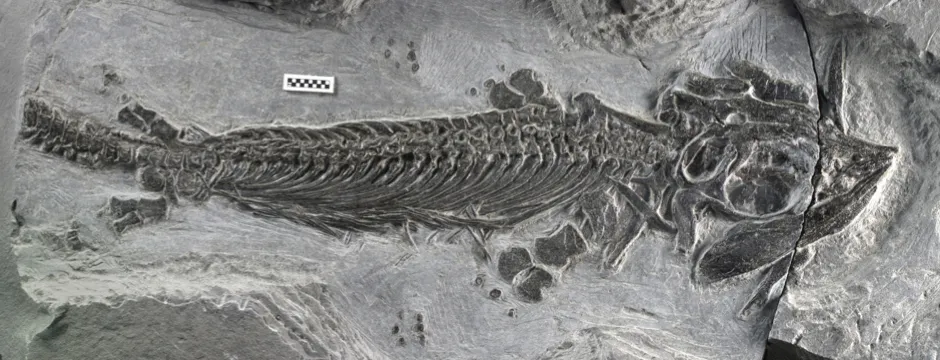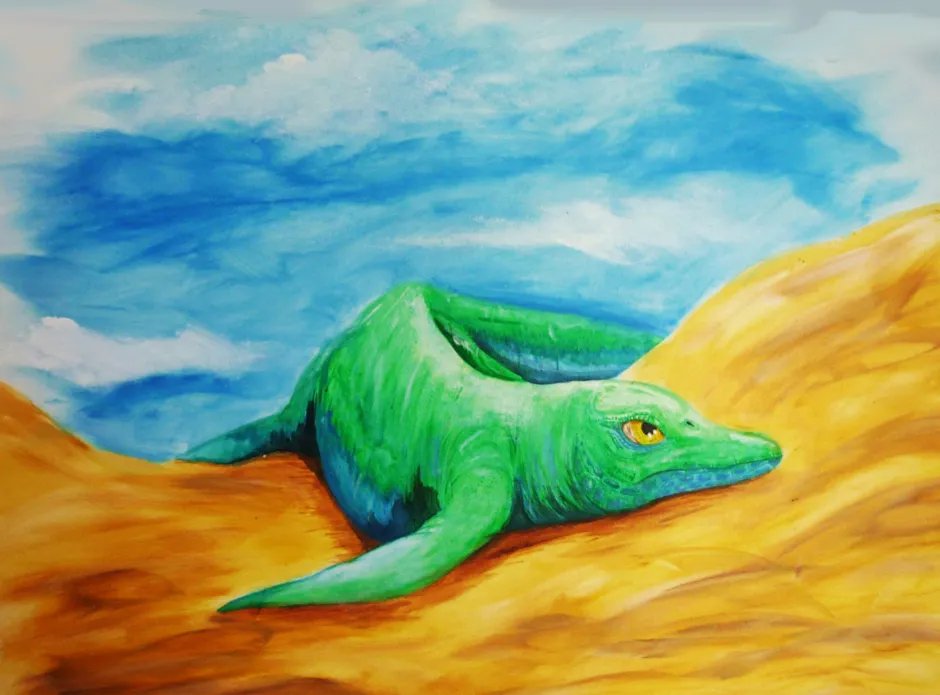An ancient marine reptile that swam the oceans nearly 250 million years ago had unusual pebble-like teeth which it used to crush hard-shelled prey, scientists believe.
The creature, named Cartorhynchus lenticarpus, belongs to an extinct group of reptiles known as ichthyosaurs.
Not much is known about the ancestry of these animals but experts believe they may be more closely related to crocodiles and dinosaurs and birds than they are to lizards and snakes.

Olivier Rieppel, a palaeontologist at the Field Museum in Chicago and one of the study authors, said: “By studying this early ichthyosaur’s unusual rounded teeth, we get a better understanding of how these animals evolved and what their lifestyles were like.”
At just under 0.5m long, Cartorhynchus is the smallest known ichthyosaur and may have lived on land and in the sea.
Its fossil remains were found in Anhui province, China, and date from the start of the Triassic period – about 248 million years ago.
Read more about ancient animals:
- Neil Shubin: How do big changes in evolution happen?
- Ancient land-based crocodiles evolved to be more like whales
- Ross Barnett: Why should we be interested in prehistoric animals that aren’t dinosaurs?
While scanning the fossil, scientists discovered unusual pebble-like teeth hidden in its short snout, with signs of wear and tear.
The teeth may have been used for crushing the shells of snails and clam-like molluscs known as bivalves, the researchers said.
Mr Rieppel said: “When we first described Cartorhynchus, we thought that it didn’t have any teeth at all and was a suction feeder. But later on, researchers realised that it did have some teeth further back in its jaws.”

As well as big flippers, Cartorhynchus had flexible wrists for movement on the ground.
Mr Rieppel said: “Ichthyosaurs became creatures of the open ocean, but the smaller species like, Cartorhynchus, probably lived closer to the shore and picked up invertebrates to eat from the sea floor.”
The researchers compared Cartorhynchus to other early ichthyosaurs and found rounded teeth cropped up in several other species.
This suggests the trait evolved independently more than once, rather than from one common ancestor, they said.

Cartorhynchus lived about four million years after the worst mass extinction in history, known as the Permian-Triassic extinction, which wiped out 96 per cent of species and may have been linked to global warming.
Mr Rieppel said: “There were no marine reptiles prior to the [Permian-Triassic extinction]. That’s what makes these early ichthyosaurs so interesting – they tell us about the recovery from the mass extinction, because they entered the sea only after it.
“By gaining a better understanding of how these ichthyosaurs evolved, we get a better sense of how life rebounds after extinctions, and that lesson is still relevant today.”
The findings are published in the journal Scientific Reports.
Reader Q&A: Why did crocodiles stop evolving?
Asked by:Jamie Malley, By Email
They didn’t. Nothing that’s still alive has stopped evolving. Change continues, and some individuals live while others die. So evolution cannot stop. It’s true that crocodiles haven’t changed much over millions of years, but that’s because they’re so successful at exploiting a niche that hasn’t changed much either.
What is curious about modern crocodiles is that their land-based ancestors, that walked on two legs, somehow survived whatever wiped the dinosaurs out about 65 million years ago. Modern crocodiles still have hind legs longer than front legs inherited from them.
When they evolved into aquatic creatures, they had to avoid breathing water and so evolved a second palate in the roof of the mouth to keep air and water apart.
Crocodiles will probably keep evolving while looking and behaving much the same as long as their niche of warm food-rich waters survives. Otherwise they will have to change to adapt or go extinct as so many other creatures have before them.
Read more:
